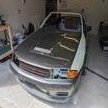Oil Analysis - Who Can Read The Results
Announcements
-
Similar Content
-
Latest Posts
-
The 4WD version is harder to find so I compared the parts diagrams of the two https://nissan.epc-data.com/stagea/whc34/5414-rb20de/engine/172/17453/ and https://nissan.epc-data.com/stagea/wgnc34/287-rb26dett/engine/172/17201/ seems like the same part is called out: 17201...what with WHC34 tank work?
-
Thanks man, car is registered! Time to enjoy it. But if anyone has questions let me know happy to help others avoid my pitfalls.
-
By TurboTapin · Posted
2.8L Stroked S1 RB25 Fully built block (Spool&CP) and head (Ferrea & Kelford 272's). Hydro lifters. Precision 6466 Gen2 1.00 T4 Divided. 2x 40mm Turbosmart open dump gates. DW 1200cc injectors 2x AEM 320LPH Pumps Haltech Elite 2500, IC7, WB1, TC8, Etc. 4" Downpipe, 3.5" Catback. 94AKI (101.5ron) Pump gas + WMI (2x 1000cc nozzles) 463rwkws @ 27psi on a mustang roller dyno. -
By TurboTapin · Posted
I finally got it on the dyno today and luckily it stayed in one piece! It wasn't without its dramas though. First off, sent my power steering belt to the moon around the third pull. Scared me half to death. Tuner laughed and mentioned that often happens with RB's... I may need to look into adding the Ross power steering idler, or something a long those lines. Second issue that came up was about 2 hours in, we realized the VCT wasn't working and had to go back through the timing and knock threshold once it was fixed (I had botched setting up VCT). That waisted a good hour or so. I was surprised to see that with VCT working, we saw a ~38rwkw difference across the powerband. More then I would of expected. Without further ado, made 463rwkw@27psi. Not the numbers I originally set out after, but still more then enough to kill myself and I'm very happy. Mustang roller dyno's are known to be heart breakers compared to other dyno's. Two things that limited me, first was the hydraulic lifters/7600rpm cut. Tuner was adamant that I was losing out on a lot of power up top because of it. Second was the pump gas & WMI. He wasn't 100% comfortable tuning with WMI, and was honest about it. He stated he's more confident on E85/Race gas. I look at this as a positive as it leaves me a lot of room for improvement. All in all, very happy! I need to see what I can do about that rev limiter... I use to rev my stock RB20 to 8000rpm and now I have a fully built head that I only rev to 7600... It's bugging me. Don't mind my fantastic picture/filming skills. RB28 - Dyno (1).mp4
-





Recommended Posts
Create an account or sign in to comment
You need to be a member in order to leave a comment
Create an account
Sign up for a new account in our community. It's easy!
Register a new accountSign in
Already have an account? Sign in here.
Sign In Now